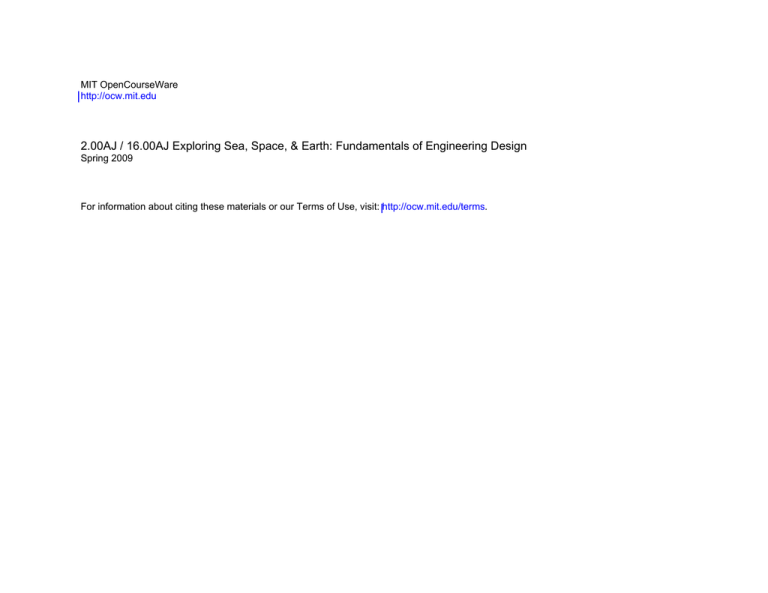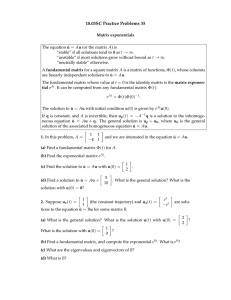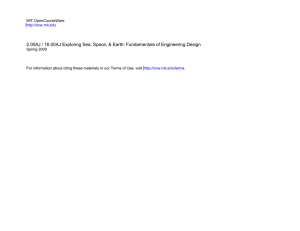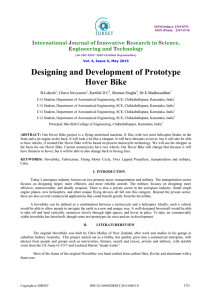2.00AJ / 16.00AJ Exploring Sea, Space, & Earth: Fundamentals of... MIT OpenCourseWare rials or our Terms of Use, visit: .
advertisement

MIT OpenCourseWare http://ocw.mit.edu 2.00AJ / 16.00AJ Exploring Sea, Space, & Earth: Fundamentals of Engineering Design Spring 2009 For information about citing these materials or our Terms of Use, visit: http://ocw.mit.edu/terms. Picture Team: Los Aguamaestros 2.00A Final Project 2009 Gathering data at the Sailing Pavilion To construct an ROV that can measure the Temperature, Salinity, Pressure, and Light in a body of water. The Design Process Design Constraints: - Submerge at least 20 ft. under water - Max Dimensions: 50 cm x 50 cm x 50 cm - Must contain: - 2 Light Banks - One Video Camera - One full sensor package - Maximum of Three Motors Goals: -Tapered/Pointy Front - Curved Edges - Wings - Structurally Stable - Big Surface Area Parallel to Ocean Floor - Flames - Laser Beams Preliminary Designs Failures/Improvements - Buoyancy - Propellers - Sensor Package - Motors - Camera Placement Rodrigo checking to see if our data makes sense Final Results Graph & Analysis Predicted Strengths - Hydrodynamic Wings - Structurally Stable (Compact) - Stable in Water (Big Surface Area) - Motor Placement/Ability to Turn Easily Predicted Weaknesses - Weight of ROV - Waterproofing Final Design Performance Analysis - Unbalanced Horizontal Motors - Problematic vertical motor - Neutrally Buoyant - Very quick, agile, & maneuverable - Got all the data we needed! - Hydrodynamic Wings - Structurally Stable and Stable in Water - Neutrally Buoyant Motor/Propeller Testing Table Reflections & Conclusions - Overall Success - Wish we Knew Buoyancy Before Pool Run - Disappointed with Motor/Propeller Performance - Time Wasted Waiting for Parts - Wings Worked Out Great for Stability - Sensor Package Difficult to Waterproof - Not Enough Time to Waterproof Frame





